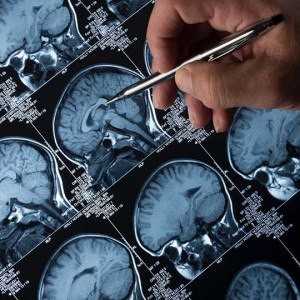3-Minute Test Detects Parkinson’s and Lewy Body Dementia

A recent published paper in Alzheimer’s & Dementia: the journal of the Alzheimer’s Association entitled “Improving the Clinical Detection of Lewy Body Dementia with the Lewy Body Composite Risk Score,” reports a new quick test to determine signs and symptoms of Lewy Body dementia (LBD) and Parkinson’s disease dementia (PDD) with 96.8 accuracy.
LBD is a neurodegenerative disease characterized by deterioration of cognitive, behavioral, and mobility functions. The disease affects over 1.3 million in the U.S. and is ranked second in dementia-related diseases after Alzheimer’s. This condition is difficult to diagnose specially outside expert centers and the only way to conclusively diagnose the disease is through a postmortem autopsy. Recently, a Florida Atlantic University neuroscientist developed a new questionnaire-based method named “Lewy Body Composite Risk Score” (LBCRS) from autopsy-verified cases that can help diagnosis PDD and LBD in about 3 minutes.
“Most patients never receive an evaluation by a neurologist skilled in the diagnosis of Lewy body dementia, and significant delays and misdiagnoses occur in most patients with this disease,” James E. Galvin, MD, MPH, a prominent neuroscientist and a professor of clinical biomedical science in FAU’s Charles E. Schmidt College of Medicine and FAU’s Christine E. Lynn College of Nursing, said in a university press release. “This new tool has the potential to provide a clearer, more accurate picture for those patients who are unable to be seen by specialists, hastening the correct diagnosis and reducing the strain and burden placed on patients and caregivers.”
The one-page LBCRS contains several yes/no questions related to six non-motor features that distinguish LBD from other forms of dementia. This brief rating scale questionnaire allows a clinician to assess signs and symptoms of patients related to postural instability, slow movement, rigidity, excessive daytime sleepiness, and visual hallucinations.
RELATED: Promising Drug For Parkinson’s Disease Supports Fast Tracking to Clinical Trials
The LBCRS concept was tested on a total of 256 participants with different gender, education, comorbidities, behavioral, affective, motor symptoms, and diagnosis. To evaluate their cognitive status, each patient was given a 30-minute test battery. Furthermore, family caregivers of LBD patients completed questionnaires related to the presence and severity of non-cognitive symptoms.
The results were compared with those obtained with standard evaluation methods of cognition, motor, functional and behavioral as well as from clinical dementia rating. Dr. Galvin and his researchers observed that LBCRS could distinguish LBD from Alzheimer’s disease with 96.8% accuracy, 90% sensitivity, and 87% specificity, making it a very promising new tool for quick, efficient, and conclusive diagnostic of LBD. Furthermore, LBCRS improved the sensitivity of diagnosis, which in turn reduced patients’ exposure to medications with unfavorable consequences, providing them with appropriate symptomatic therapies.
“Early detection of Lewy body dementias will be important to enable future interventions at the earliest stages when they are likely to be most effective,” said Dr. Galvin. “Our study provides evidence-based methodology that will have applications in clinical practice, participation in clinical trials, prevention studies, community surveys, and biomarkers research.”






